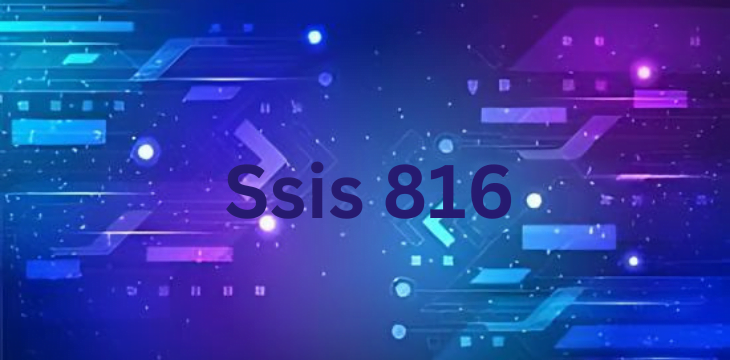Microsoft’s SQL Server Integration Services (SSIS) is a powerful tool used for data integration, transformation, and migration. SSIS 816 refers to a specific version or build of SSIS, and understanding its features, capabilities, and best practices is crucial for data professionals. This article delves into SSIS 816’s, providing insights, FAQs, and a conclusion to help you maximize its potential.
Contents
Overview of SSIS 816
SSIS 816 is a build of the SQL Server Integration Services that offers significant enhancements and improvements over its predecessors. This version includes advanced data transformation capabilities, better performance, and increased reliability. Whether you are a seasoned SSIS user or new to the platform, understanding the intricacies of SSIS 816’s can greatly enhance your data handling capabilities.
Key Features of SSIS 816
- Enhanced Performance: SSIS 816’s boasts improved data processing speeds, allowing for more efficient execution of ETL (Extract, Transform, Load) processes.
- Improved Usability: The user interface has been refined to be more intuitive, with better debugging and error-handling tools.
- Advanced Data Transformation: New transformation components and functions provide greater flexibility in manipulating data.
- Integration with Other Services: Seamless integration with other Microsoft services and third-party tools enhances its versatility.
Getting Started with SSIS 816
Installation and Setup
To begin using SSIS 816, you need to install SQL Server and the SSIS components. Ensure that your system meets the necessary requirements and follow the installation guide provided by Microsoft. Once installed, you can access SSIS through SQL Server Data Tools (SSDT).
Creating Your First SSIS Package
An SSIS package is a collection of tasks that define the workflow for data movement and transformation. Here’s a simple example to get you started:
- Open SSDT: Launch SQL Server Data Tools and create a new SSIS project.
- Add a Data Flow Task: Drag a Data Flow Task from the toolbox to the Control Flow tab.
- Configure Data Sources: In the Data Flow tab, add source and destination components to define where your data comes from and where it goes.
- Apply Transformations: Use transformation components like Aggregate, Merge, and Conditional Split to manipulate your data.
- Execute the Package: Run the package to see your data being processed.
Best Practices for SSIS 816
- Optimize Data Flow: Minimize the use of blocking transformations and ensure efficient data flow design.
- Use Logging and Error Handling: Implement robust logging and error handling to track and resolve issues quickly.
- Parameterize Configurations: Use parameters and configurations to make your packages more flexible and easier to manage.
- Regular Maintenance: Regularly update and maintain your SSIS packages to ensure they remain efficient and up-to-date.
Common Issues and Troubleshooting
Performance Bottlenecks
Performance issues are common in ETL processes. To address these, consider the following:
- Optimize Queries: Ensure that your source queries are efficient.
- Use Appropriate Data Types: Match data types between source and destination to avoid unnecessary conversions.
- Monitor Resources: Keep an eye on system resources like CPU and memory usage during package execution.
Connection Problems
Connection issues can disrupt your data flow. To troubleshoot:
- Check Connection Strings: Verify that your connection strings are correct and that the necessary drivers are installed.
- Network Stability: Ensure that your network connections are stable and reliable.
- Authentication: Confirm that your authentication credentials are correct and have the necessary permissions.
FAQs
What is SSIS 816?
SSIS 816 refers to a specific build or version of SQL Server Integration Services known for its performance enhancements and advanced features.
How do I install SSIS 816?
You can install SSIS 816 by downloading SQL Server and selecting the Integration Services component during the installation process. Follow the official Microsoft documentation for detailed instructions.
What are the system requirements for SSIS 816?
The system requirements for SSIS 816 include a compatible version of Windows, sufficient RAM, and disk space. Refer to the official documentation for detailed specifications.
Can I integrate SSIS 816 with other tools?
Yes, SSIS 816 can be, integrated with various Microsoft services like Azure, SQL Server, and even third-party tools, enhancing its versatility and utility.
How can I optimize my SSIS packages?
To optimize your SSIS packages, focus on efficient data flow design, avoid blocking transformations, use appropriate data types, and implement robust logging and error handling.
Conclusion
SSIS 816 represents a significant advancement in data integration and transformation. With its enhanced performance, improved usability, and advanced features, it is a valuable tool for any data professional. By following best practices and understanding common issues, you can maximize the potential of SSIS 816’s and ensure efficient and reliable data processing
